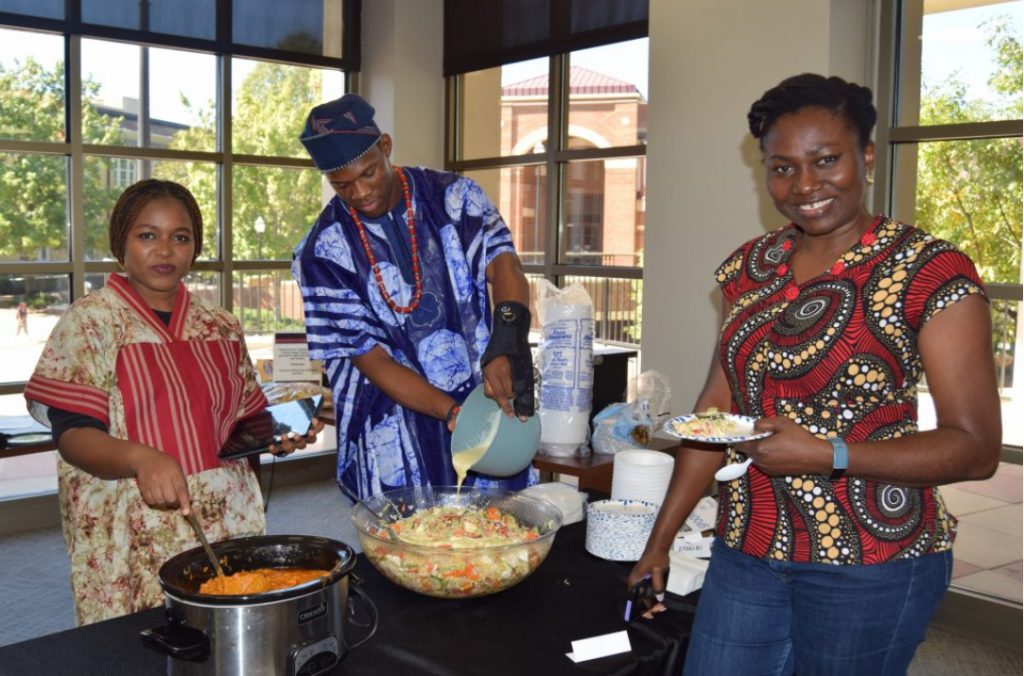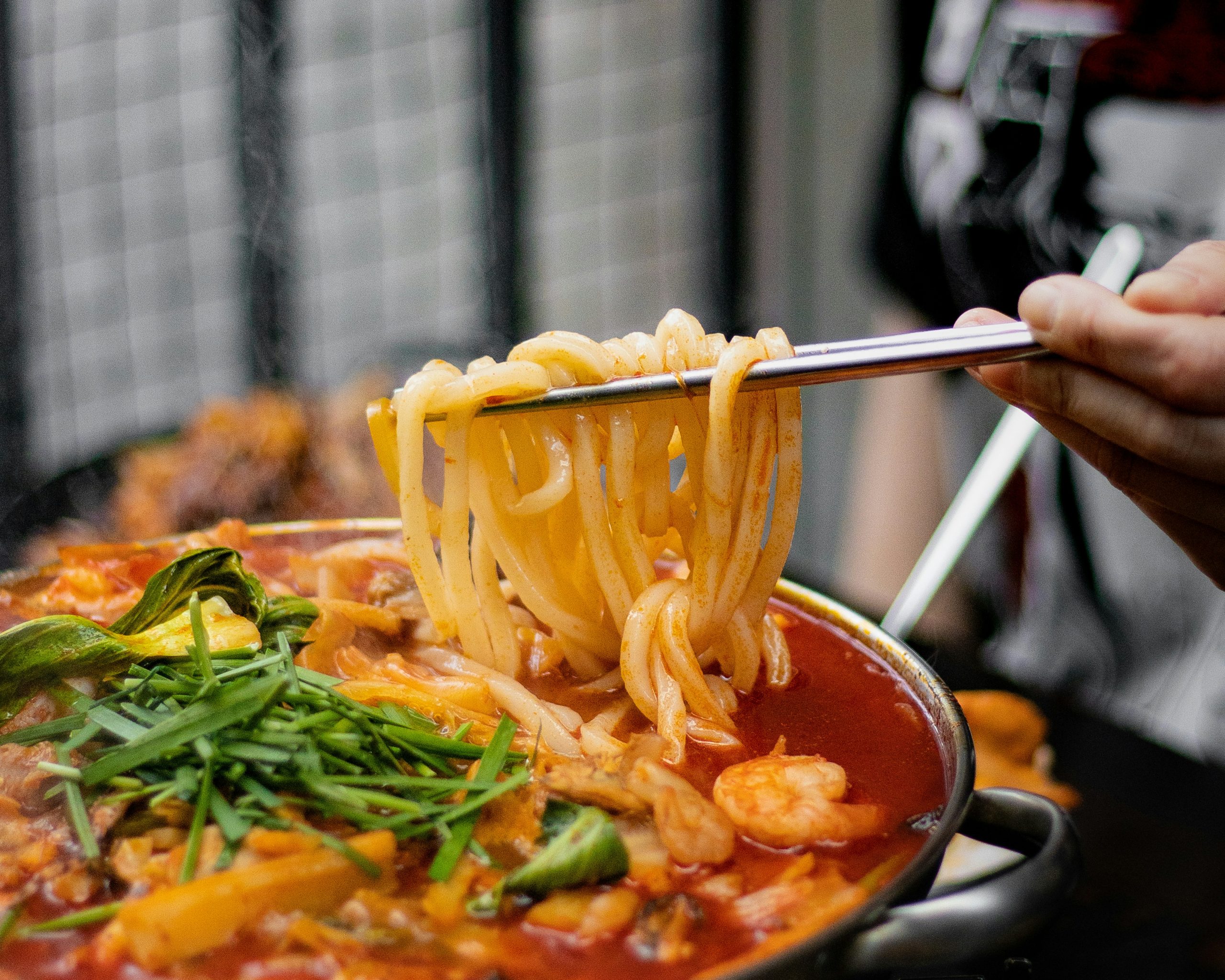Story by: Sophia Lander
As a person who is always willing to try new things and learn and experience new cultures, I enjoy traveling. Being able to visit other countries and states has put me in contact with a variety of foods and traditions. However, as much as I enjoy travelling and eating new and different things, as a Korean American, nothing hits the spot more than being able to eat Korean food at home.
I remember travelling through Europe and experiencing an intense craving for a piping hot bowl of tteokboki (spicy rice cakes), or a warm, hearty plate of bulgogi (marinated beef) with cold, crunchy kimchi (spicy pickled vegetables) and a fresh, steaming bowl of rice. While the European food was delicious, my taste buds yearned for my comfort food.
International cuisine is not about the latest taste trends but about maintaining the strong ties immigrants and international students have to their native foods. Without access to familiar cooking, these people are left without an emotional anchor to their roots.
When deciding who to interview to further understand the importance of international food in communities, I turned to my hometown, Sarasota, Florida; specifically, I looked at the Korean restaurants in my area. One stood out to me, Charlie’s Bulgogi Restaurant.

Charlie Chi, the owner, first came to Sarasota to become a professional golfer. He studied at IMG Academy, a preparatory boarding school for sports training and practiced for the PGA until he got injured. Looking for a new opportunity, he turned to the culinary field started a food truck. With Korean food growing more popular, Charlie saved up money and opened a permanent location.
When discussing how Korean cuisine contributes to Sarasota’s cultural diversity, Chi spoke of how, while Sarasota is “pretty diverse as far as Europeans,” the Asian population is minimal. However, the European and snowbird influence has made Sarasota food culture diverse.
When Chi started his journey into Korean cuisine, he was “the second or third Korean restaurant in the area,” other Koreans owned Japanese restaurants. Now, as Korean food and culture has become popularized, there are, “at least 7 purely Korean restaurants and several “pan-Asian” restaurants that have a little bit of Japanese, Chinese and Korean.”
An example of a “pan-Asian” restaurant “a local Pho restaurant [that] had kimchee and Korean fried chicken on the menu.” When asked about why he thought Korean culture and cuisine had become so popular, he mentioned K-pop and K-dramas, saying, “K-pop makes people curious about Korea but… K-dramas show food often, and people eating and enjoying food.”
Chi has been in the US for 20 years, and whilst he “enjoy[s] a beer and buffalo wings or a steak on occasion” he prefers Korean food.
Even though it’s not necessary for immigrants and international peoples to have access to their home food, Chi says, “I don’t know anyone who doesn’t miss their home cooking.”
As Korean food is unique with its use of sweet and spice and fermentation, it is not easy to replicate in another country. Some of Chi’s best customers are Korean college students at Ringling College of Art and Design. These students also bring lots of their friends for his K-BBQ. This shows how international food can bring together people from different cultures.
Another example of this is shown in the International Coffee Hour at University of Alabama (UA). According to its website, this is an event held by the International Student Center that brings together cuisine from around the world.

I spoke to three of their staff members, Trang Nguyen, Nadine Carl-Lhopital, and Ruzanna Yolyan. They said that the largest populations of international students at UA are from Nigeria, Iran, Turkey, China, India and Vietnam. The majority of international foods at the event come from these countries.
When asked about the general reception this event garners, Nguyen says there is “a lot of appreciation from students and faculty and staff.”
However, the food presented is not exact to the culture due to the lack of proper ingredients in the area. Carl-Lhopital commented on this, saying that, “usually you are not going to find exactly the same [ingredients]…even if you make it yourself, the ingredients are different. It never tastes exactly the same [as] back home.”
Even though having food that is from your culture isn’t necessary, it is comforting.
The three also discussed how they wish there was a restaurant with food from their home countries and they didn’t have to cook all of the dishes.
Elaborating on the international student representation, Nguyen said that whilst they try to do their best and remain faithful to the original culture, due to the lack of ingredients and cooking techniques, the food doesn’t taste the same.
However, she said “international students really appreciate the fact that we acknowledge and honor and celebrate their cultures.”
The International Coffee Hour brings together people of different cultures through food.
Nguyen said that this event is like “[a] conversation starter that will evolve into more meaningful conversations and relationships.” She also mentions that the event carries educational materials as a way to help teach people about a country’s culture, people, and landscape.
International cuisine becoming integrated into communities is important not only for maintaining the strong ties immigrants and international students have to their native countries, but also in building connections with people everywhere, all around the world.
